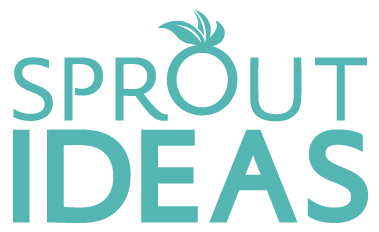WHAT IS IMPROVISATION?
 What is improvisation?
What is improvisation?
Improvisation is more than just for laughs.
 Ten reasons YOU should try an improv class!
Ten reasons YOU should try an improv class!
 Recommended Reading
Recommended Reading
Occupations that have taken our courses
 What is improvisation?
What is improvisation?
“Making it up as you go along”
“Ad-libbing.”
“Winging it.”
“It’s what those actors do on ‘Whose Line is it Anyway?’”
Improvisation is the art of acting spontaneously in the moment without planning or preparation.
And it can be learnt!
Well, kind of. The reality is we’re all pretty good at it already, and we do it all the time. Even a well-planned day involves improvisation. Perhaps when you visit the supermarket you always hit the grocery aisle first, but on this particular morning you notice that the pharmacy section is completely empty for once. A swift detour bags ten bonus minutes and time for an in-store cappuccino before confronting the check-out queues.
That, of course, seems a world apart from a TV comedy like “Whose Line Is It Anyway”, which is the thing that most people think of when improvisation is mentioned. Seeing actors or comedians conjure up comedy sketches on the fly seems more impressive than beating the queue for bubble bath, but both situations require responding in the moment and making decisions based on the situation at hand.
One obvious difference is that the comedians have to perform to the expectations and pressure of a live audience who probably also gave the suggestion for the scene. I remember one sketch inspired by the audience suggesting “stomach ache”. Pretty much immediately one actress declared she had a stomach ache, her partner instantaneously mimed applying a stethoscope. The rest of the cast supported the scene by adding elements showing that this was now clearly in a hospital. When the actress was told her mystery stomach ache was in fact a full blown pregnancy she went into labour and began giving birth to a baby she didn’t know she was carrying. Another actor declared he was her husband and fainted. This was a pure farce created on the spot and the performers seemed to be reading each other’s minds. Working this well as a team DOES take real application and practice.
So how do they do it? They are all simply following a set of principles and rules that have been developed in the theatre to create the maximum opportunity for creativity and collaboration and storytelling. These include …
- Saying “Yes and”
- Being in the moment
- Letting go of expectations and control
- Saying the first thing that comes into your head
- Making your partner look good
- Short turn taking
- Following the follower
- Being obvious
- Use what’s already there
- Status – and the dynamics of power
- Raising the stakes
- The circle of expectation
- The story spine
These are principles improvisers routinely return to, to practice and explore. These “rules” are always sitting in the unconscious of a performer ready to be applied. Sometimes they compete for which is the most appropriate and like any set of artistic rules sometimes they can be broken.
So improvisation can be applied to art and life. A mix of planning and reacting in the moment are usually both required and the skilful improviser can choose when to apply the principles to any endeavour to navigate a successful path.
FOOTNOTE: Improv or Impro? Occasionally people ask me if the official {abbreviation} of improvisation is “Impro” or “improv”? Well improv appears in more dictionaries (I checked) but most people, in the UK at least, use them pretty much interchangeably. Personally I lean towards “Impro” purely because it was the title of the best book I’ve read on the subject by Keith Johnstone. (More on that here).
 Ten reasons YOU should try an improv class!
Ten reasons YOU should try an improv class!
Actors and performers routinely learn to improvise as a part of their training, and it’s not just so they can cope when someone forgets a line. It builds confidence and improves focus and awareness. It allows performers to explore a range of emotions, characters and ways of behaving. It develops spontaneity, creativity and storytelling. It is also a brilliant tool to quickly build connections and trust between people, something that is essential in what can be a short rehearsal period. So it’s pretty easy to see how applicable improv skills are in everyday life and In fact EVERYONE could benefit from learning to improvise.
But first, a shout to teachers! To allow people to blossom in a skillset that can potentially leave you exposed, you need to be in the capable hands of a tutor who knows how to nurture, encourage, and build a safe space for the students to experiment. Someone who can help suspend the inner critic and boost the inner cheer-leader. I was a nervous beginner and if I had been in the hands of a lesser tutor I may have not come back after my first class. I was lucky, my first teacher was great, and although I was still nervous before every class of my first ten week course I left at the end knowing I had to come back.
So here’s Ten Good Reasons to give it a try …
1. Meet New People
So what sort of people do an improv class? When we started running workshops we expected our classes to be full of four types of people; comedians and actors and people who wanted to be comedians and actors. We could not have been more wrong. Our weekends are enjoyed by people that represent almost every occupation. From accountants and artists to soldiers and programmers. Add to that a 67 year age range, from 18 to 85 (our oldest so far). A huge diversity of people all connected through a desire to be creative and try something a little different.
2. Really connect with people
It’s nice to meet new people in any circumstances but meeting in an improv class is especially satisfying. You’ll be spoilt for attention, you’ll really be listened to, and made to look good, because that’s part of the training. Exercises encourage more attentive listening beyond the words to really understand what is being said. This creates better interactions and improve emotional IQ. Paying attention to your partner creates better scenes and better connection. And it feels good to be heard. This connection can lead to meaningful, lasting relationships outside the classroom too.
3. Have fun
An improv workshop is fun. Yes really. Every new student shudders at the thought of doing a class dedicated to acting spontaneously. Every student was nervous before their first class. Once you learn its okay to fail and make mistakes the nerves begin to dissipate. In some games making mistakes is part of the fun. There’s no need to be funny, witty or tell jokes. This isn’t stand-up comedy. The point is to create stories and scenes together, and it just so happens that sometimes the by-product of this process can be humour. The ideal atmosphere for improv is one of playful focus where there is no pressure and where the creativity is effortless. The goal is for us to come together in an environment where we all can create and laugh with our friends for a few hours.
4. Be present
Being in the moment these days is a challenge. Worries can easily drag us in the future or the past when we let them, and usually with no benefit to us at all. The worst thing about it is we stop noticing the here and now – and that’s where our team mates, colleagues and the rest of the world happen to be. So whether onstage or in your office you can’t fully support whats going on unless you are present. Lots of improv exercises are designed to pull your attention away from tomorrow’s “to do” list to today’s “do now” list. Incidentally living more in the moment is good for your well-being.
5. Tell great stories and develop your self-expression
Even when we are not on stage we still performing throughout the day, so why not learn to do it better? The communication skills you learn in an improv class are just as useful telling stories to your mates down the pub, or giving a presentation at work. Stories are everywhere; in adverts, sales pitches, political speeches, or chatting to your neighbor about Ms. Johnson’s new fancy man. Facts and figures are important but stories are memorable. They help the message stick. “Just do it”. A three word story that expresses an attitude and a brand, and is memorable. And HOW we tell the stories is just as important. Some people engage us immediately – what is it about their “performance” that is so effective? Actors study characters and characteristics and learn the impact they have. These are tools we can all acquire.
6. Becoming more comfortable thinking on your feet
Seeing people handle a Q&A effectively is impressive. It requires focus, awareness, composure and an ability to adapt and deal with changing circumstances. It requires the self-belief that comes with regularly practicing dealing with the unexpected. Add a helping of fun and those are the ingredients of pretty much every improv class. Whenever you step out of your comfort zone you develop a slightly bigger comfort zone and an improv class provides a safe environment and a big safety net.
7. Notice more
Improvisers are trained to use EVERYTHING. Everything that is said, everything that is done, everything that is around you, emotions, sounds, even mistakes. Broadening our awareness of what is available gives us more options for action. And you may have noticed already many of these skills feed each other – if you are more present you notice more, if you notice more you’ll become more present.
8. Understand and play with status
The biggest revelation I had when learning to improvise was discovering status. Status was a concept proposed by Keith Johnstone to allow actors to explore and the experiment with the power dynamics between people. He found it made the interactions of actors more authentic. However the implications of this stretches far beyond the stage. Once you are aware of it you can see it everywhere – from friends and families, to work colleagues and clients – status messages surround us. And the ability to recognise and use status is invaluable in any communication. It allows you to lead better, follow better, and connect better.
9. Be more creative
Improvisation is writing without putting pen to paper, and painting without applying paint to canvas. The opportunity to flex your creative muscles as an adult are few and far between if you are not in the creative industries. But in an improv class you can spend hours co-creating stories and characters. Some of the things you create will stay with you, and the people you create them with, for a long time. Some moments will last forever.
10. Develop your confidence and resilience
Most people attend an improv workshop to do something fun or creative. But a sizeable amount of people go to develop confidence, and it’s not hard to see why. You get a chance to display your creativity and tame your inner critic. You learn to adapt and change to whatever is thrown at you in a scene. You get to study how people behave as characters and experiment with changing it. You get a chance to laugh at yourself and become less self-conscious. And you get a chance to practice your social skills but in the class but usually in the pub or coffee bar afterwards.
 Recommended Reading
Recommended Reading
BEST ALL ROUND READ
The Improv Book: Improvisation for Theatre, Comedy, Education and Life
Alison Goldie
THE CLASSIC BOOK – MUST READ!
Impro: Improvisation and the Theatre
Keith Johnstone
If you only ever read one book on Improvisation it should be “Impro” by Keith Johnstone. It is a ground-breaking piece of work. A totally fascinating exploration of creativity, acting, teaching, spontaneity and life skills told in a really accessible style. Check out the whole chapter on “STATUS” which explores the power dynamics within a scene and contains heaps of useful insights into the way people behave.






